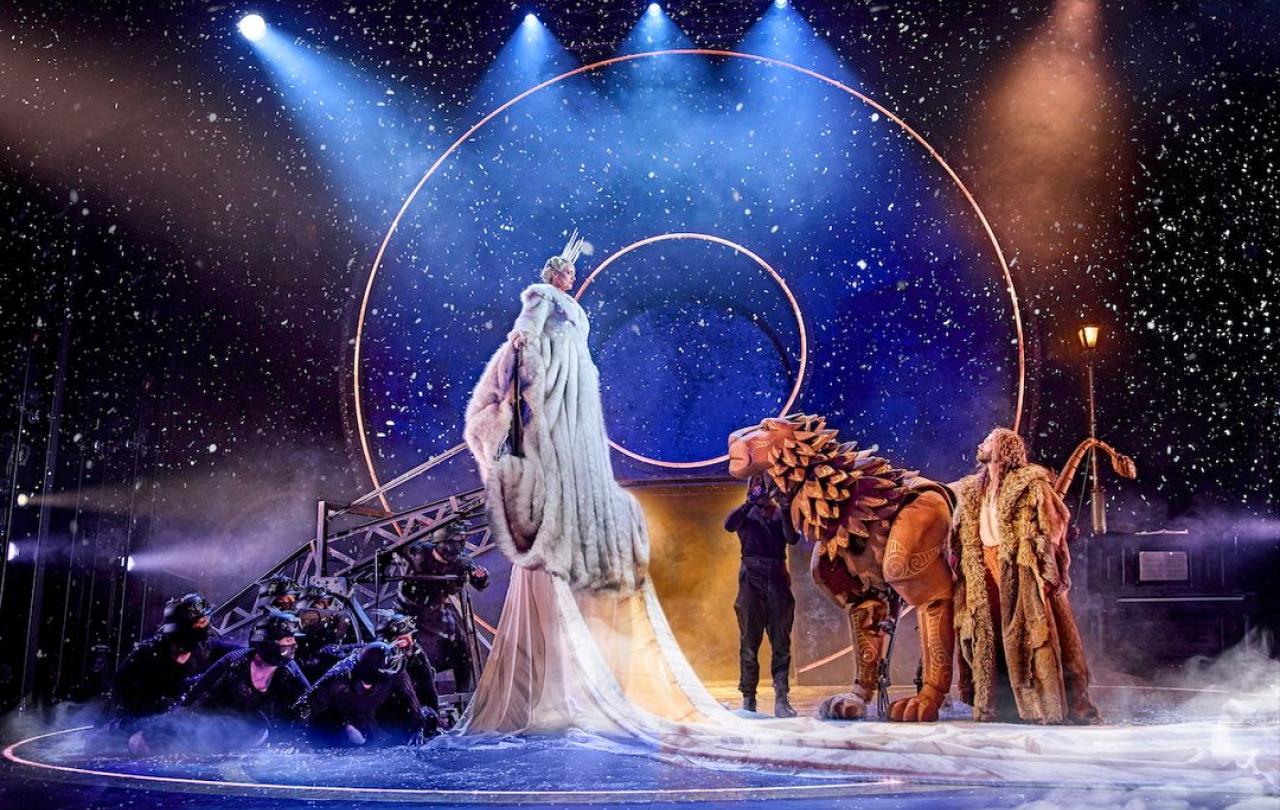
This article contains spoilers.
It’s been 75 years since C.S. Lewis’s The Lion, The Witch and The Wardrobe was first published, and the story is still captivating audiences and even sparking fresh controversy.
If you hadn’t heard the news, the role of the lion, Aslan, is rumoured to have been offered to Meryl Streep, a woman, for Greta Gerwig’s upcoming film, set to be released in time for Thanksgiving next year.
I recently saw another adaption of the famous book - Adam Peck’s play - in a theatre in Torquay, as part of a 75th anniversary tour of the UK.
And having previously read the book and watched two different film versions, I still found myself considering elements of the story I hadn’t previously, hidden depths I hadn’t noticed - even if these didn’t include Aslan’s gender.
For those not familiar with the tale, it follows the journey of four children through the doors of a magic wardrobe, which transports them into a fantastical kingdom in which a lion reigns but a witch has held dominion for 100 years.
Under the White Witch’s spell, there has been only winter for a century - “always winter and never Christmas”, as one famous line from the story goes.
But now, thrust into this story in the fulfilment of a prophecy long foretold, four “sons of Adam and daughters of Eve” - boys and girls, to you and me - come as the lion king returns, and a new day dawns.
The winter begins to thaw, Spring is in the air, and Father Christmas even shows up to shower the children with gifts.
But the return of Aslan - and even Santa Claus - doesn’t signal the end of the story. There is still a battle to be fought; the witch still has power and even ensnares one of the children, Edmund, with the promise of all the Turkish delight he could wish for, and the title of a prince.
It is at this moment - still early in the tale - that the battle between good and evil is clearly laid out, and the forces of light and darkness clash thenceforth.
In the play, those enslaved by the witch are clad in black to emphasise the distinction, while much is made of the meaning of the name of the youngest child, Lucy: “bringer of light”.
The imagery is abundantly clear, as it has ever been in Lewis’ Chronicles of Narnia, of which the The Lion, The Witch and The Wardrobe is the first and most famous of seven books.
And the author, renowned for being an atheist who later became a Christian, leans heavily upon his newfound faith throughout the Narnian tales, and not least in the character of Aslan.
Yet while you and I may frustratingly regularly let ourselves down, there is also something within us - is there not? - that ever yearns to cheer on the forces of good.
At Easter, it is especially hard not to see in Aslan’s death and resurrection a striking similarity with the figure at the centre of the Christian faith.
Indeed, it was this moment of greatest sacrifice - for the “traitor”, Edmund - that most struck me this time around, even though I already knew the story so well.
At church the following day, as I took Communion, I was still reflecting on Aslan’s sacrifice and wondering whether Edmund more closely resembles the average Christian - myself included - than the older, nobler brother, Peter, in whom most of us would prefer to see our likeness.
My mind returned to a moment in the theatre that had humbled me, when the lady sitting in front of us handed me £20 to treat my children for being “so good”, having at the interval made me bristle by asking them to sit quietly and stop kicking her chair.
“Fair enough?” I hear you suggest. Well, perhaps, but I didn’t think it until that humbling moment after the curtain had closed.
My son later told me he hadn’t thought the lady had been unkind, which again got me thinking about my own imperfections and need to be more childlike.
Yet while you and I may frustratingly regularly let ourselves down, there is also something within us - is there not? - that ever yearns to cheer on the forces of good.
I doubt many audience members were rooting for the witch, while I suspect most can also understand the need to “beware the witch”, as one song from the play puts it
Another biblical parallel is the fulfilment of a prophecy long foretold, while both the Bible and The Lion, The Witch and The Wardrobe highlight the special significance of someone innocent dying to save the guilty.
There is even a clear reference at the very start of the book and play to one of Lewis’ most famous pieces of theology, when the professor in whose wardrobe the children later get lost asks them a question as they consider whether or not to believe Lucy about the magical kingdom that she first glimpsed.
She’s either lying, mad or telling the truth, the professor says, in much the same way that Lewis says of Jesus Christ’s own central claim: he’s either “mad, bad or God”.
As for the success of the play, as someone who no longer lives in London, I was certainly impressed by this West End product.
The scene changes are creative, aided by music, dance and possibly even a trapdoor - my children and I had different opinions on how the magical disappearances of certain characters were achieved. Maybe it truly was magic.
There’s also the nice touch of the play starting even before it officially begins, through the twinkling of a soldier’s fingers upon the keys of a piano while the audience take their seats - perhaps to help us turn our minds from a sunny day in the English Riviera to dreary London at the time of the Blitz.
So, do go and see the play if you get the opportunity - it’ll do you good and make you think, whether or not you choose to consider if the lion is male or female.





